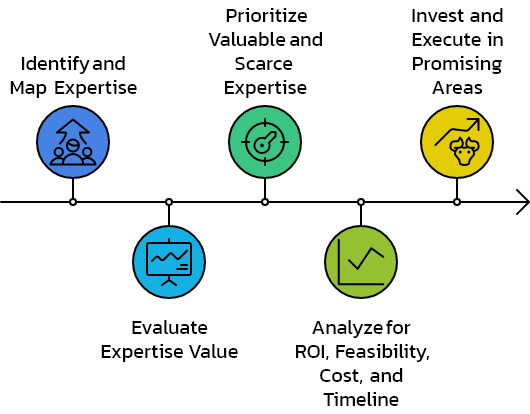Today, a staggering 87% of AI projects fail due to the gap between scientific breakthroughs and their real-world applications. Unlike disciplines like chemistry, where discoveries are handed off to engineers, AI often relies on data scientists to engineer solutions—leading to a high failure rate.
A new discipline that bridges this gap by applying AI research through engineering principles, enabling domain experts to create AI-driven solutions without needing to become data scientists.
This approach has three key advantages:

Increased Success Rate: By integrating engineering principles, organizations can significantly reduce the failure rate of AI projects.
Leveraging Expertise: The approach utilizes existing knowledge within the organization, ensuring AI solutions address real-world needs.
Targeted Implementation: Focusing on the most valuable and scarce expertise areas ensures that AI efforts are impactful.


#1.Map Expertise: Identify and map the existing expertise within your organization.
#2.Evaluate Expertise Value: Determine the most valuable and scarce areas of expertise.
#3.Prioritize Areas: Focus on the top five areas where expertise is both valuable and scarce.
#4.Analyze for ROI: Assess these areas for return on investment (ROI), feasibility, cost, and timeline.
#5.Invest and Execute: Invest in the most promising areas and start implementation.
Once implemented, engineered intelligence can lead to breakthrough applications that deliver tangible value and are successfully deployed. As this discipline develops, organizations will unlock new economic and societal benefits, creating a new wave of innovation and job opportunities.
Engineered intelligence could be the solution to overcoming AI project failures, ensuring that AI reaches its full potential in delivering real-world value.